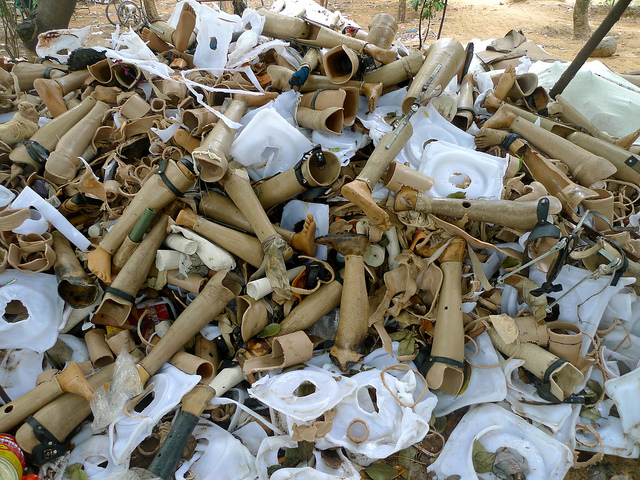
More Uncanny Piles of Discarded Prosthetics by Nadya Peek from Flickr. Used under Creative Commons license.
David Brooks, primarily a political columnist and commentator, has written a book attempting to understand some of what makes us function as human beings, and as a collaborative society. He discussed the book, The Social Animal, in a recent TED Talk of the same name. He says:
“For centuries, we have inherited a view of human nature based on the notion that we are divided selves. Reason is separated from the emotions, and society progresses to the extent that reason can suppress the passions…This has produced a great amputation, a shallow view of human nature. We’re really good at talking about material things, but we’re really bad at talking about emotions.”
Later, he says:
“When we think about human capital, we think about things we can measure easily. Things like grades, SATs, the number of years in schooling. What it really takes to do well and live a meaningful life are things that are deeper, things that we don’t really even have words for.”
I’m admittedly biased, but it seems to me that art, and the larger thread of creativity, sit at the core of the development of this new social animal, which Brooks believes (and I agree) is at the heart of successful society. And to be honest, it’s sort of stunning to me that (at least in the talk—I’m 518th on the list to get the book out of our library) he doesn’t mention art once as a tool for developing this new social muscle. This is especially surprising, I think, because his six basic constructs for creating a successful social animal interlock perfectly with the consumption of art:
- Mindsight: “the ability to enter into other people’s minds and learn what they have to offer.”
- Equipoise: “the ability to have the serenity to read the biases and failures in your own mind.” “Epistemological modesty.”
- Metis: “street smarts…a sensitivity to the physical environment.”
- Sympathy: “the ability to work within groups.”
- Blending: the ability to integrate disparate concepts.
- Limerence: A drive and a motivation to find those “moments of transcendence when the skull line disappears and we are lost in a challenge or a task.”
These jive very nicely with what art does to audiences. It teaches empathy, it teaches distance and self-awareness, it teaches an understanding of the world. It is a social enterprise, behind the fourth wall or in front, and the creation and consumption of art is collaborative and complex in a way that few things in the world are. As far as limerence, I think an easier word is Alan Brown’s concept of captivation, which is directly linked to the concept of flow—essentially, then, that a human being is at his or her most contented when he or she is completely enraptured in the activity at hand.
At the core, Brooks’ argument is that we are not separated individuals as much as we are a humming hive. To function well, to govern well, to do business well, to educate our young (and to have our young understand and relate to each other), we must create a world that encourages them to grow as social animals. We do not want this “great amputation,” and we all have the tools right in front of us to keep it from happening. They are the art we do, the work we make, and the places that people can come to consume it. Someday, hopefully, people will look to art and its place in our communities when they start talking about how collaborative and intertwined we all have to be to succeed—adopting language that encourages that connection is the first step.
